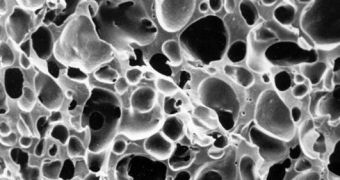Ice is odd due to the strange behavior of the water.
Most compounds in nature shrink when they get cold, and so they display a smaller volume in solid state than as liquids.
But regular ice takes up more space than water because water has its minimum volume at 4?C and below or over this temperature its volume expands. If you put a full water bottle to freeze overnight, the next day it will be broken apart by the ice which has a higher volume.
But ice formation requires temperatures below 0?C for pure water and is quite a slow process as water functions like a thermostat, slowly losing or catching the heat.
However, now researchers working with Sandia National Laboratories' huge Z machine have managed to turn water into ice in just nanoseconds (which is extremely fast) and, what is more interesting, at temperatures over 100?C, which is the boiling point of water.
The Z machine generates temperatures higher than those found on the sun (a record here on Earth) and is employed for testing matter's phases: solid, liquid and gas. "The three phases of water as we know them-cold ice, room temperature liquid, and hot vapor-are actually only a small part of water's repertory of states. Compressing water customarily heats it. But under extreme compression, it is easier for dense water to enter its solid phase [ice] than maintain the more energetic liquid phase [water]", Daniel Dolan, a Sandia researcher said.
In the new experiment, the volume of "water shrank abruptly and discontinuously, consistent with the formation of almost every known form of ice except the ordinary kind."
Physicians have discovered at least 11 other types of ice, characterized by how they behave at certain temperatures and pressures. One type is better known: supercooled water that can be below 0?C, but it does not freeze.
Many traits of all these states are not known. This research "helps us understand materials at extreme conditions." Dolan said. "Rapid compression-around 70,000 times normal atmospheric pressure in a tiny fraction of a second-caused the rapid freezings. When the pressure was relieved, the ice melted. Apparently it's virtually impossible to keep water from freezing at pressures beyond 70,000 atmospheres," Dolan explained.

 14 DAY TRIAL //
14 DAY TRIAL //